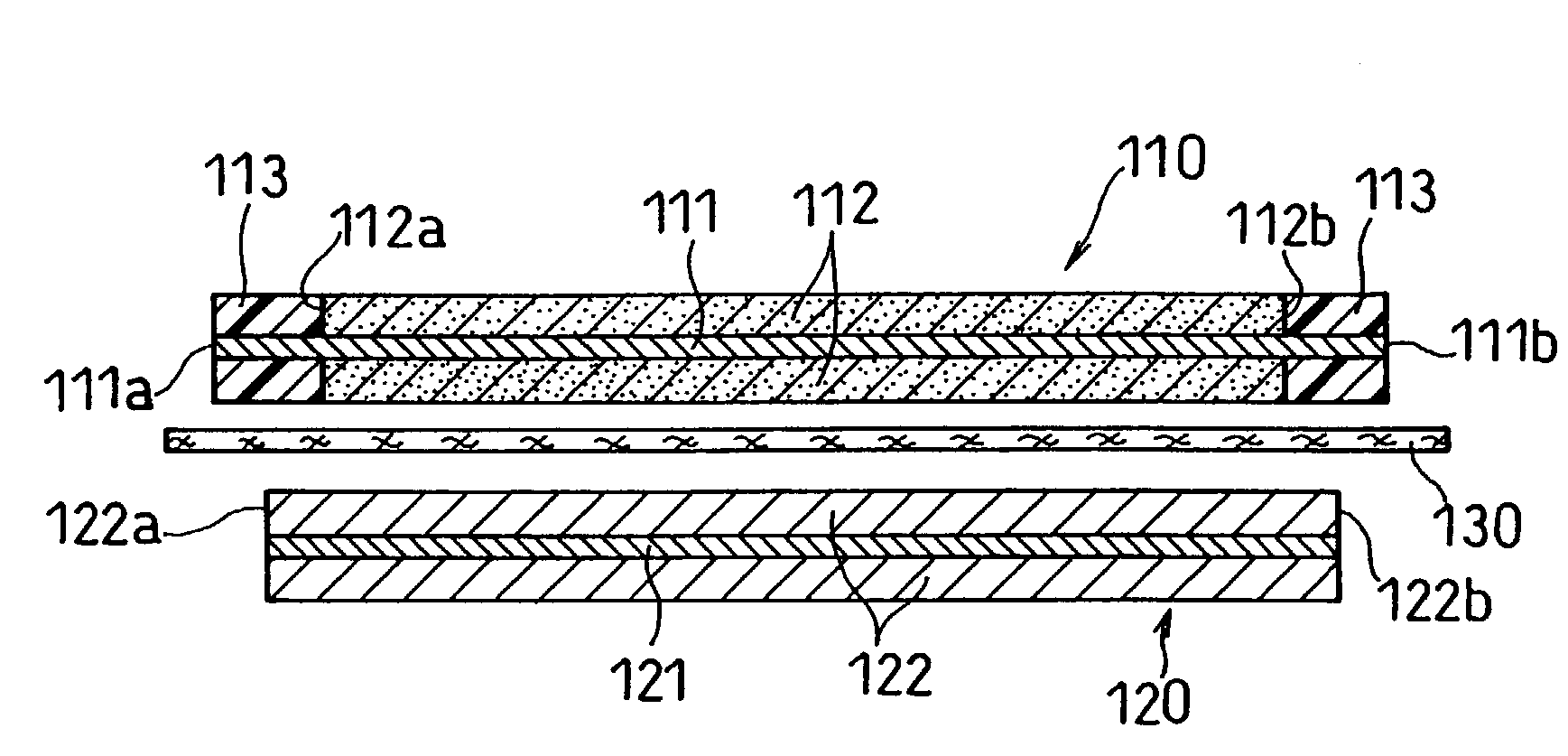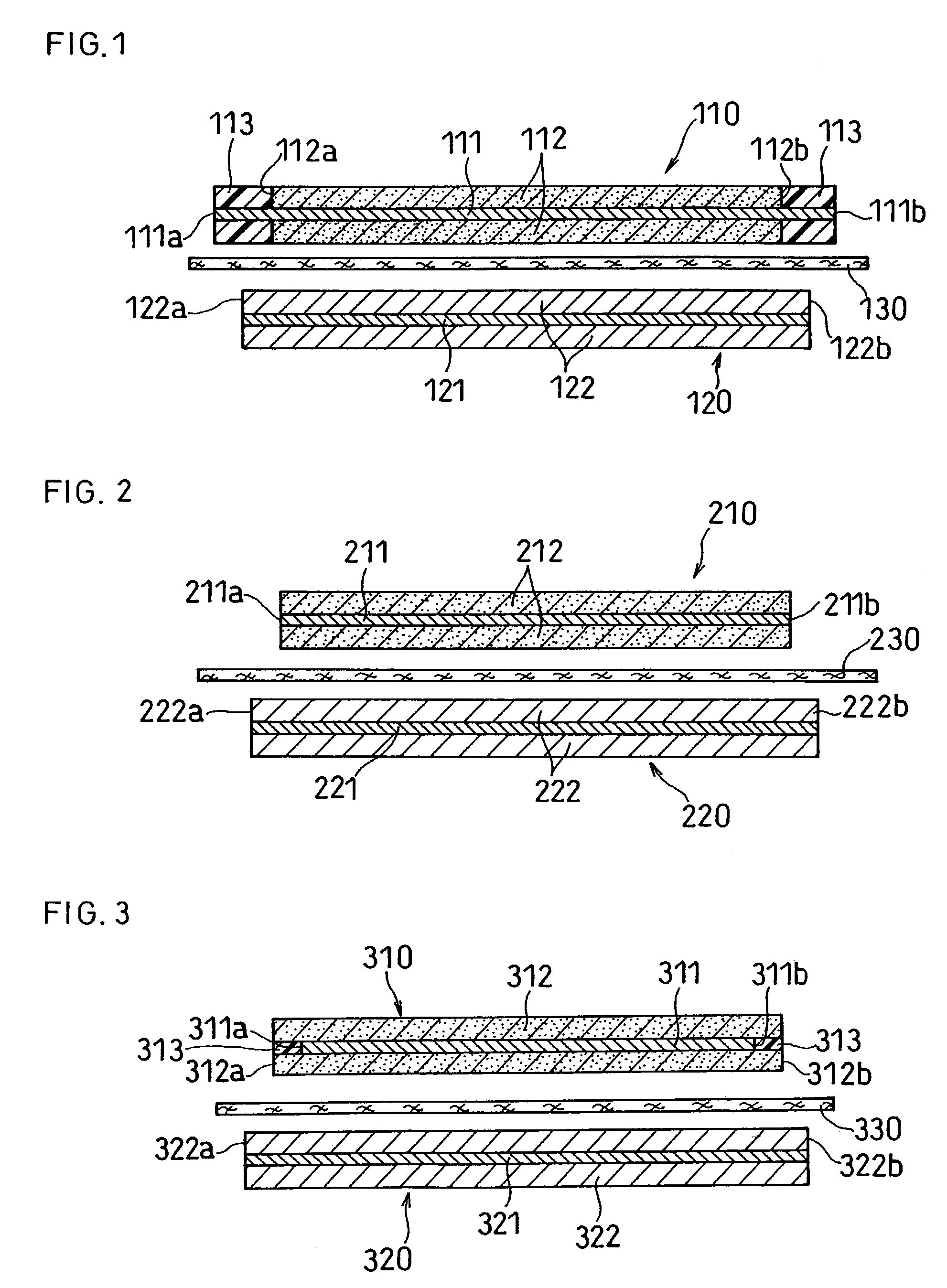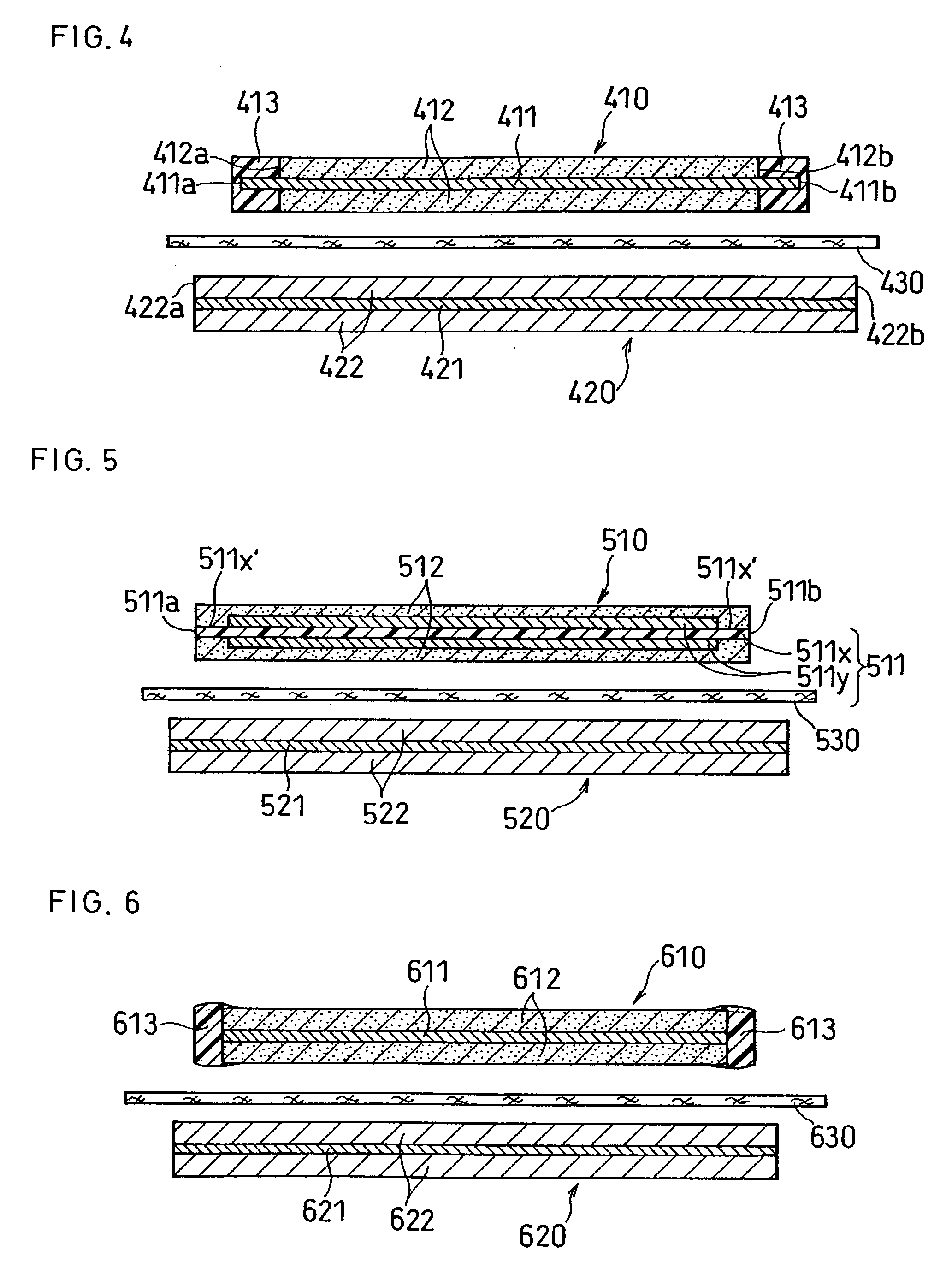Lithium ion secondary battery
a secondary battery and lithium ion technology, applied in the direction of non-aqueous electrolyte cells, cell components, sustainable manufacturing/processing, etc., can solve the problems of internal short-circuit, internal short-circuit, ignition of flammable negative electrode active materials, etc., and achieve high safety
- Summary
- Abstract
- Description
- Claims
- Application Information
AI Technical Summary
Benefits of technology
Problems solved by technology
Method used
Image
Examples
embodiment 1
[0045]The lithium ion secondary battery in this embodiment has such a structure that each lengthwise edge of the positive electrode current collector is positioned on an outer side of each lengthwise edge of the negative electrode active material part. Thus, even if burrs occur at the edges of the positive electrode current collector when the positive electrode plate is slit, this structure makes it possible to prevent the short-circuit between the burrs and the negative electrode active material part.
[0046]On each lengthwise end of the positive electrode current collector, a non-active material part which does not absorb or desorb a lithium ion during charge and discharge may be carried. The non-active material part can stabilize the edges of the positive electrode current collector. Further, the thickness of the non-active material part is preferably the same as that of the positive electrode active material part so that there is no difference in height between them and they make ...
embodiment 2
[0055]The lithium ion secondary battery in this embodiment has such a structure that each lengthwise edge of the positive electrode active material part is positioned on an outer side of each lengthwise edge of the positive electrode current collector. In this structure, when the positive electrode active material part is slit near its edges, both the positive electrode current collector and the positive electrode active material part are not slit at the same time, and burrs are therefore unlikely to occur. On the other hand, in the conventional structure as illustrated in FIG. 2, the positive electrode current collector 211 and the positive electrode active material part 212 are slit at the same time, and burrs are therefore likely to occur at the edge 211a or 211b of the positive electrode current collector.
[0056]In this embodiment, it is also preferable that each lengthwise edge of the negative electrode active material part be positioned on an outer side of each lengthwise edge ...
embodiment 3
[0066]This embodiment is directed to a lithium ion secondary battery including an electrode plate assembly so configured that each lengthwise edge of the negative electrode active material part is positioned on an outer side of each lengthwise edge of the positive electrode current collector, that each lengthwise edge of the positive electrode current collector is positioned on an outer side of each lengthwise edge of the positive electrode active material part, and that exposed parts of the positive electrode current collector which are not covered with the positive electrode active material part are coated with an insulating material.
[0067]In such an arrangement, the edges of the positive electrode current collector are opposed to the surface of the negative electrode active material part. However, since the exposed parts of the positive electrode current collector which are not covered with the positive electrode active material part are coated with an insulating material, even i...
PUM
| Property | Measurement | Unit |
|---|---|---|
| length | aaaaa | aaaaa |
| thickness | aaaaa | aaaaa |
| thickness | aaaaa | aaaaa |
Abstract
Description
Claims
Application Information
 Login to View More
Login to View More - R&D
- Intellectual Property
- Life Sciences
- Materials
- Tech Scout
- Unparalleled Data Quality
- Higher Quality Content
- 60% Fewer Hallucinations
Browse by: Latest US Patents, China's latest patents, Technical Efficacy Thesaurus, Application Domain, Technology Topic, Popular Technical Reports.
© 2025 PatSnap. All rights reserved.Legal|Privacy policy|Modern Slavery Act Transparency Statement|Sitemap|About US| Contact US: help@patsnap.com



